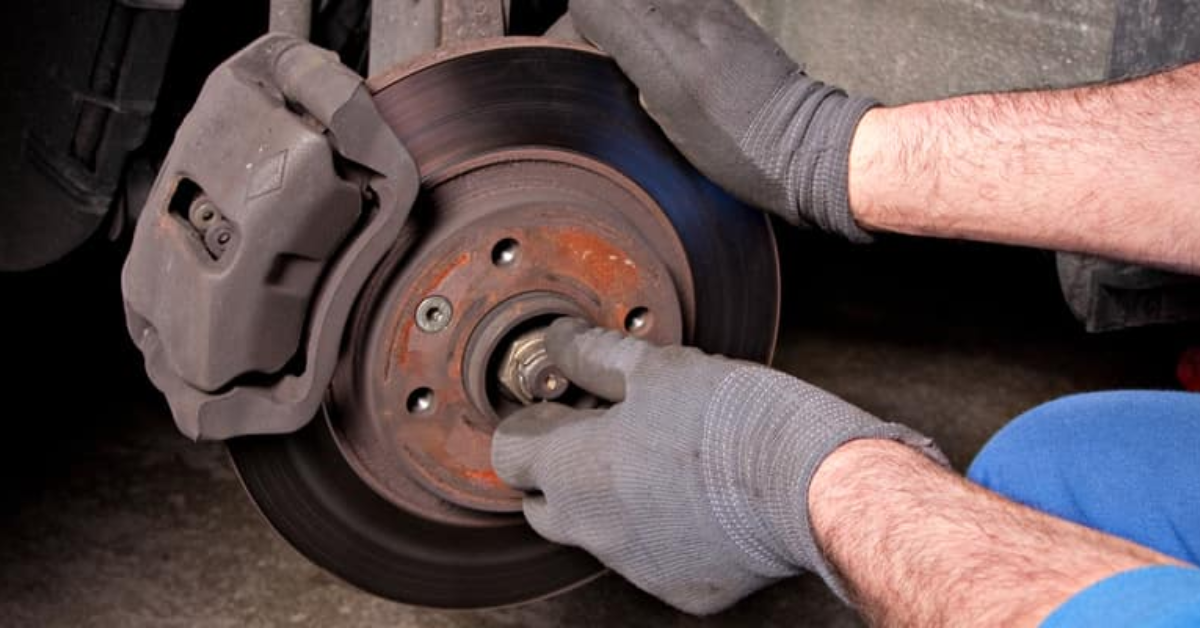Experiencing a shaking or vibrating sensation when you apply the brakes in your car can be concerning. This issue can vary from mild to severe, and it’s essential to address it promptly. This article dives into the most common causes behind car shaking when braking, potential solutions, and when to seek professional assistance.
1. Warped Brake Rotors
One of the primary reasons a car shakes when braking is warped brake rotors. The rotors are the discs connected to your vehicle’s wheels, and they work in conjunction with brake pads to slow down or stop the car. Over time, rotors can become uneven or “warped,” often due to excessive heat from frequent or aggressive braking.
Symptoms of Warped Rotors:
- Vibration in the brake pedal.
- Steering wheel shaking when brakes are applied.
Solution: Warped rotors may require resurfacing, which smooths out imperfections, or complete replacement, depending on the extent of the damage. A mechanic can measure the rotor thickness and recommend the best course of action.
2. Worn Brake Pads
Brake pads wear down over time due to friction. As they thin, they may cause vibrations, especially if they’re uneven or have been exposed to high temperatures, leading to “glazing” or a hardened surface.
Symptoms of Worn Brake Pads:
- Noise when braking, such as squealing or grinding.
- Shaking or pulsating when the brakes are applied.
Solution: Replacing the brake pads will typically solve this issue. Mechanics may also check for uneven wear on the pads, which could indicate other problems, such as issues with the caliper or brake hardware.
3. Stuck Brake Calipers
The brake caliper is responsible for squeezing the brake pads against the rotors. Sometimes, calipers can become stuck or not release correctly, causing uneven braking and vibrations.
Symptoms of Stuck Brake Calipers:
- Intense vibration, especially at higher speeds.
- Burning smell after braking due to overheating brakes.
- Noticeable pulling to one side when braking.
Solution: A stuck caliper often requires immediate repair, which may include cleaning, lubricating, or replacing the caliper altogether.
4. Unbalanced Tires or Wheel Alignment Issues
Although this issue is not directly related to the braking system, unbalanced tires or misaligned wheels can contribute to shaking, which becomes more noticeable when you brake.
Symptoms of Tire or Alignment Issues:
- Vibration when driving at higher speeds.
- Uneven tire wear.
- Car pulling to one side even without braking.
Solution: Balancing the tires or performing a wheel alignment can reduce vibrations and prevent further wear on your tires.
5. Suspension System Problems
Your car’s suspension system works with the braking system to provide a smooth and stable ride. Components such as shock absorbers, struts, and control arms can wear out over time. If these parts are loose or damaged, they can lead to vibrations during braking.
Symptoms of Suspension Issues:
- Shaking or vibrating during braking and even regular driving.
- Excessive bouncing or swaying when driving on uneven surfaces.
- Noise from the suspension area.
Solution: Inspecting and replacing worn suspension components can alleviate vibrations. If suspension issues are suspected, it’s best to consult a professional mechanic.
6. Worn Wheel Bearings
Wheel bearings allow your wheels to rotate smoothly. If they wear out or become damaged, it can lead to vibrations, especially when applying the brakes. Worn bearings can also affect how your wheels connect to the suspension system, causing additional shaking.
Symptoms of Worn Wheel Bearings:
- Vibrations during braking and general driving.
- Grinding or growling noise from the wheel area.
- Pulling to one side while driving or braking.
Solution: Replacing worn wheel bearings usually resolves this issue, improving stability and handling while driving.
7. Brake Drum Problems (For Drum Brake Systems)
If your vehicle uses a drum brake system, issues with the brake drums themselves can lead to shaking or vibrations. Like rotors, brake drums can become worn, warped, or out of balance.
Symptoms of Brake Drum Issues:
- Vibrations or pulsations when applying brakes.
- Noise coming from the rear wheels during braking.
Solution: Brake drums may need resurfacing or replacement, depending on their condition. A professional mechanic can inspect them and recommend the best solution.
How to Prevent Braking Vibrations in the Future
- Regular Brake Maintenance: Schedule regular inspections and maintenance for your braking system. This includes checking brake pads, rotors, and calipers.
- Avoid Overheating Brakes: Aggressive driving and sudden stops can overheat the brakes, leading to warping or glazing. Practice smooth and controlled braking.
- Monitor Tire Condition and Balance: Ensure that your tires are properly inflated, balanced, and rotated. Wheel alignment should also be checked periodically.
- Inspect Suspension Components: Regularly inspect suspension components like shock absorbers, struts, and control arms. Replacing worn parts helps prevent vibrations.
- Address Warning Signs Early: If you notice any unusual noises, vibrations, or pulling while braking, don’t ignore them. Early intervention can prevent more costly repairs.
When to Consult a Mechanic
While some maintenance tasks can be done at home, it’s advisable to consult a professional mechanic if:
- The shaking or vibrations are severe.
- You’re unable to identify the cause.
- There are multiple symptoms that indicate complex issues (like noise, smell, and steering problems).
